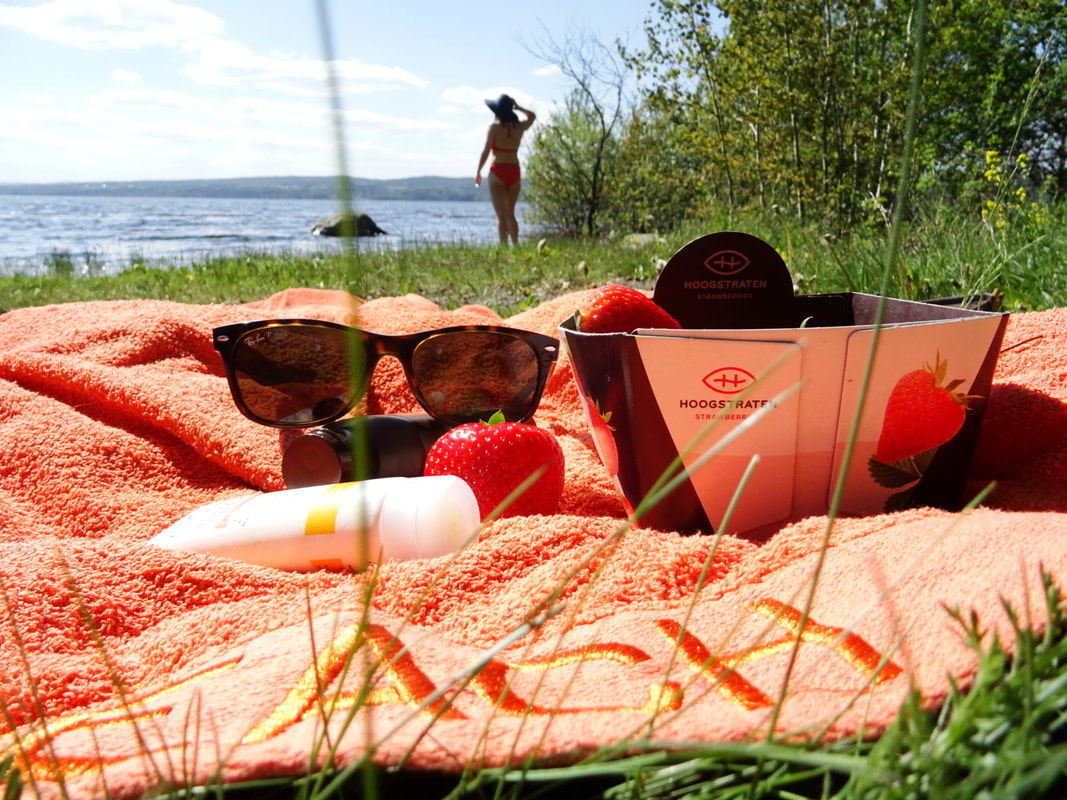|
June has finally taken pity on us with some long-awaited sunshine and I am embraced by the warm summer air as I leave my cool and temperate workplace. I'm going for a swim, the first of the year. The bikebag is packed with summery ingredients: a large towel, bikini, a basket of strawberries and a book. At the top lies what will be this summer's most important accessory for Miss Lupus, sunscreen, sunglasses and a hat.
"Be careful with the sun and use high spf!" This has been one of the most frequent mantras from the doctors. In addition to avoiding stress, this advice is repeated everywhere when reading about lupus. Because while many rheumatic conditions improve in the sun and warmer climate, with lupus it's the opposite. Particularly high levels of SSA / SSB antibodies can cause photosensitivity and sunrashes. When the skin is exposed to UV rays, cells are damaged, and the immune system initiates a clean-up job to remove the damaged cells. This is something that happens in everyone, but in lupus patients, the cleaning cells don't work fast enough and the damaged cells is left lying around a little too long. The immune system identifies them as invaders and launches an attack to avert the danger. As a result, it's not necessarily just the skin that is affected by sunlight. Too much sun can cause other symptoms such as fever, joint pain, fatigue, etc. to flare up. Worst case scenario, too much sun can lead to internal organs being attacked. In addition, some of the medication used to treat lupus enhance the damage from the sun. Plaquenil, which is the basic treatment, makes you tolerate the sun less, while immunosuppressive drugs such as Imurel can increase the risk of skin cancer. As with everything else in lupus, there are individual differences of how much sun is tolerated. There are those who have SSA and SSB antibodies who never get sunrashes and don't experience flare-ups, while some can be affected by UV light from lamps inside. I don't know exactly where I am on this spectrum yet. I have noticed that I don't tolerate the sun like I used to. Especially the rashes on my cheeks seems to flare-up and turn red after I have been in the sun, and my eyes feel a little dry and sore in the evening. Sun rashes was one of the earliest symptoms, so you could say I'm on high alert when it comes to the sun and skin these days. But so far so good as long, as I use high spf regurlarly and protect myself with sunglasses and cover my head. Wearing your coolest hat and enjoying strawberries in the shades after a swhim is not half-bad either. Sources: https://bindevevssykdommer.no/sle-2/ https://revmakompendium.pressbooks.com/chapter/systemisk-lupus-erytematosus-sle/ https://www.lupus.org/resources/uv-exposure-what-you-need-to-know#
0 Comments
Leave a Reply. |
AuthorA blog about beeing newly diagnosed with lupus. Dreaming of becoming a mum once the disease is under control. I am translating the blog to English so the posts will appear on this page as I go. Archives
November 2021
Categories
All
|


 RSS Feed
RSS Feed